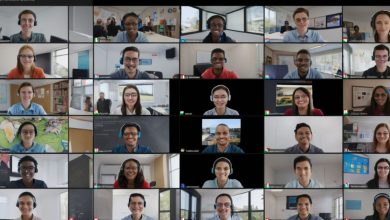Remote Cultural Exchange Projects Connecting Global Teams
In an era where teams span continents and time zones, fostering cross-cultural understanding is more critical than ever. Remote cultural exchange projects offer a powerful solution: they use digital tools and structured activities to connect employees from diverse backgrounds, breaking down communication barriers and nurturing collaboration. In this article, you’ll learn what remote cultural exchange entails, discover its core benefits, explore engaging project ideas, understand the essential tools and best practices, and review real-world case studies. By the end, you’ll have a comprehensive roadmap to design and launch virtual cultural exchange initiatives that strengthen your global team.
Understanding Remote Cultural Exchange
Definition and Core Concept
Remote cultural exchange projects leverage video conferencing, collaboration platforms, and digital content to facilitate interactions among team members in different regions. Instead of traveling for in-person workshops, participants engage online to share their traditions, languages, and professional experiences. These initiatives aim to create empathy, foster mutual respect, and build a sense of belonging despite geographical separation. By weaving cultural learning into everyday workflows, remote cultural exchange transforms colleagues into global collaborators.
Why Remote Cultural Exchange Matters for Global Teams
Global teams often face miscommunication due to differing cultural norms—whether it’s interpreting direct feedback or understanding local holidays. Remote cultural exchange addresses these challenges by:
-
Building Intercultural Competence: Team members gain firsthand exposure to social etiquettes and communication styles from around the world.
-
Overcoming Communication Barriers: Regular interactions reduce assumptions and clarify expectations, minimizing misunderstandings.
-
Strengthening Engagement and Retention: Employees feel valued when their heritage and perspectives are acknowledged, boosting loyalty and productivity.
-
Driving Innovation: Diverse viewpoints spark creative problem-solving; teams that understand each other’s contexts develop more inclusive solutions.
Core Benefits of Remote Cultural Exchange Projects
Enhancing Cross-Cultural Communication
When team members share cultural concepts—like greeting rituals, holiday traditions, or workplace norms—they learn to interpret tone, gestures, and unspoken cues more accurately. Over time, this reduces misinterpretations in daily communications. For example, understanding that in Japan silence can signal thoughtfulness rather than disapproval helps Western colleagues adjust their expectations during meetings. As a result, remote cultural exchange cultivates active listening skills and empathy, which are essential for seamless collaboration.
Fostering Team Cohesion and Trust
Trust in global teams often hinges on personal connections, which can be difficult to establish remotely. Shared cultural activities—such as cooking demonstrations or storytelling sessions—create informal bonding experiences. When colleagues see each other’s homes, hear family anecdotes, or sample national dishes (virtually or asynchronously), they develop a sense of camaraderie. This foundation of trust encourages open dialogue, making it easier to address conflicts or propose bold ideas.
Driving Innovation Through Diversity
Diverse teams excel at generating creative solutions because they draw from a broader pool of experiences and viewpoints. Remote cultural exchange unlocks this potential by:
-
Encouraging Perspective-Shifting: Exposure to different worldviews—such as how finance operates in Cairo or marketing trends in São Paulo—fuels out-of-the-box thinking.
-
Facilitating Collaborative Brainstorming: When participants share cultural problem-solving methods, like group consensus models used in Scandinavia or storytelling-based ideation in West Africa, teams can combine techniques to craft innovative approaches.
-
Building Psychological Safety: Employees who feel understood and respected are more likely to propose unconventional ideas without fear of judgment.
Remote Cultural Exchange Project Ideas
Virtual Cultural Show-and-Tell Series
Participants take turns presenting a five-minute segment on a cultural artifact, local tradition, or personal story. For example, an employee in India might showcase Diwali celebrations, while a colleague in Brazil could share insights on Carnival. To implement this:
-
Schedule Regular Sessions: Host weekly or biweekly meetings, ensuring presenters represent different regions in rotation.
-
Use Interactive Prompts: After each presentation, prompt the audience with questions such as “How does this tradition compare to one in your country?” or “What surprised you most about this cultural practice?”
-
Encourage Visuals: Ask presenters to share photos, short videos, or even live demonstrations (like a simple dance step or craft).
-
Record for Asynchronous Viewing: For team members in conflicting time zones, record sessions and create a shared playlist, encouraging comments and questions in a designated chat channel.
Digital Pen-Pal or Buddy Programs
Pair employees from different countries based on shared interests—whether it’s sports, music, or a commitment to professional development. This one-on-one format fosters deeper connections and mutual learning. To set up a buddy program:
-
Match by Profile: Create a brief questionnaire asking participants about hobbies, professional roles, and preferred communication styles.
-
Provide Conversation Prompts: Offer prompts such as “Describe a typical workday in your country” or “Share a meaningful childhood memory.”
-
Schedule Regular Check-Ins: Encourage a 30-minute video call or voice chat every month for at least six months.
-
Maintain Journals: Have each buddy pair keep a shared digital journal—on platforms like Google Docs—where they summarize key learnings and cultural insights.
-
Rotate Partnerships: After a defined period (e.g., three months), rotate buddies to broaden cross-cultural exposure.
Collaborative Cross-Cultural Workshops
These structured workshops immerse small groups in thematic learning experiences—such as shared cooking classes or business etiquette simulations. To host a remote cultural workshop:
-
Select a Theme: Choose a topic relevant to multiple cultures—a culinary style, holiday, or professional practice. For instance, “Innovations in Workspace Design Across Cultures.”
-
Divide into Small Teams: Create breakout groups of four to six participants, ensuring each group has diverse representation.
-
Assign Pre-Work: Ask each participant to research and prepare a short presentation or a recipe demonstration. Provide resources—articles, videos, or cooking instructions—to guide research.
-
Use Breakout Rooms Creatively: In a live video call, move small teams into breakout rooms where they co-create digital content—slides, infographics, or a short video. Encourage active collaboration using shared whiteboards (Miro or Mural).
-
Facilitate Interactive Activities: Organize a virtual cooking demo where participants follow a simple recipe together. Alternatively, host a role-play session where each team enacts a business negotiation scenario, highlighting distinct cultural negotiation styles.
-
Compile a Shared Repository: Collect all workshop materials—recipes, etiquette guides, and cultural notes—into a central repository for ongoing reference.
Global Storytelling and Digital Scrapbooks
Leverage storytelling to highlight personal and collective experiences. Participants contribute images, short videos, and written narratives to a shared digital scrapbook. To implement this idea:
-
Choose Themes: Rotate themes monthly—“A Day in My Life,” “Local Festivals,” or “Community Heroes.”
-
Use Collaborative Platforms: Platforms like Miro or Google Slides allow real-time co-creation; each participant adds their content onto a shared canvas.
-
Encourage Rich Media: Include short personal video clips, audio recordings of local music, or scanned family photos.
-
Host a “Digital Gallery Walk”: At month-end, schedule a live session where each contributor provides a two-minute walkthrough of their section, followed by audience feedback and reflections.
-
Archive for Posterity: Export the final scrapbook as a PDF or interactive HTML file; share it via a company intranet or collaboration hub so that new employees can explore past editions.
Virtual Cultural Exchange Hackathons
Combine competition and collaboration by organizing hackathons focused on solving culturally relevant challenges. For example, a global health organization could host a “Telemedicine Accessibility Hackathon” where participants design low-bandwidth solutions for remote communities. To run this event:
-
Define a Clear Challenge: Choose a problem that resonates across cultures—such as “Reducing Food Waste Through Community Apps” or “Promoting Mental Health Resources for Remote Workers.”
-
Assemble Diverse Teams: Assign participants from different regions, time zones, and functional backgrounds to each team.
-
Provide Cultural Mentors: Pair each team with a mentor—an expert familiar with local contexts—who can advise on cultural nuances and regulatory considerations.
-
Facilitate Brainstorming Sessions: Use Miro or Mural boards to capture ideas in real time. Encourage brainstorming methods like “Round Robin” or “Six Thinking Hats” to ensure all voices are heard.
-
Offer Structured Checkpoints: Schedule periodic “stand-up” sessions where teams report progress, address roadblocks, and receive feedback.
-
Conclude with Live Pitches: Host a finale where teams present prototypes or concept demos. Judges from different regions evaluate based on innovation, feasibility, and cultural sensitivity.
-
Award Prizes and Pilot Opportunities: Provide small grants or corporate support to pilot winning solutions, reinforcing the practical impact of the hackathon.
Tools and Platforms for Remote Cultural Exchange
Video Conferencing and Collaboration Tools
-
Zoom and Microsoft Teams
Ideal for live presentations and breakout rooms. Both platforms offer features like screen sharing, polls, and virtual whiteboards—essential for interactive cultural workshops. -
Miro and Mural
These collaborative whiteboarding tools allow participants to brainstorm, storyboard, and build digital scrapbooks in real time. Their infinite canvas architecture makes them perfect for collecting multimedia content. -
Slack and Microsoft Teams Channels
Use dedicated channels for ongoing cultural discussions—sharing articles, photos, and event announcements. Pin key resources and create threads for spirited debates on cultural topics.
Digital Content Creation and Sharing
-
Canva
Enables non-designers to create engaging infographics, cultural cheat sheets, and visual presentations that illustrate local traditions or professional practices. -
Loom
Facilitates quick video recordings—participants can record cooking demos, personal introductions, or language lessons. Loom’s link-based sharing simplifies distribution without cumbersome downloads. -
Padlet
Acts as a dynamic bulletin board where individuals post multimedia “notes”—images of local dishes, audio clips of regional music, or short essays about cultural heritage. Padlets can be easily embedded in team intranets.
Scheduling and Time-Zone Coordination
-
World Time Buddy
Provides a clear, side-by-side view of multiple time zones—ideal for finding overlapping windows for live workshops or hackathon check-ins. -
Google Calendar “Find a Time” Feature
Automatically suggests meeting times that suit all participants’ working hours. Pair this with rotating meeting slots to distribute inconvenience evenly. -
Doodle Polls
Useful for asynchronous polling when teams need to select dates for virtual cultural events or project deadlines. Doodle’s timezone auto-detection reduces confusion.
Best Practices and Tips for Success
Ensuring Inclusive Participation
-
Rotate Meeting Times
No single region should bear the brunt of inconvenient hours. Create a rotating schedule so each geography hosts at least one session at reasonable local times. -
Provide Recorded Sessions and Transcripts
Record live events and auto-generate transcripts. For team members in low-bandwidth areas or conflicting time zones, these materials enable asynchronous engagement. -
Offer Language Support
Encourage presenters to use simple, clear language—avoid idioms or colloquialisms. When possible, provide subtitles or translated summaries to ensure accessibility.
Setting Clear Objectives and Metrics
“How do you measure the success of a remote cultural exchange project?”
-
Engagement Metrics
-
Track attendance rates in live sessions, number of reactions in chat, and participation in polls or surveys.
-
Monitor resource downloads—how many team members accessed the digital scrapbooks, workshop recordings, or cultural handouts.
-
-
Feedback Surveys
-
Distribute pre- and post-project surveys gauging participants’ cultural awareness, empathy, and comfort levels working with colleagues from different backgrounds.
-
Use a Likert scale to measure statements like “I feel more comfortable collaborating with colleagues from different regions” or “I understand my teammates’ cultural norms better now.”
-
-
Performance Indicators
-
Measure changes in cross-functional collaboration requests—an uptick suggests improved trust and communication.
-
Document innovation outputs, such as the number of prototypes generated in hackathons or the number of new ideas contributed in brainstorming sessions.
-
Track reductions in miscommunication incidents—sales negotiation errors attributed to cultural misunderstandings should decrease.
-
Encouraging Ongoing Interaction
-
Establish Cultural Communities of Practice
Set up permanent Slack channels or Teams groups dedicated to culture. Encourage members to share articles, host “Culture Café” Fridays, spotlight local holidays, and celebrate milestones—such as Diwali, Lunar New Year, or Eid. -
Leadership Support and Role Modeling
Senior leaders should actively participate—giving presentations, sponsoring events, or simply attending sessions. When executives model curiosity and respect for other cultures, it signals that the organization values inclusivity.
Addressing Technical and Logistical Challenges
-
Bandwidth and Connectivity
Offer dial-in options for video calls or provide an audio-only conference line. When possible, compress presentations and use low-resolution video settings to accommodate slower internet connections. -
Data Privacy and Security
Use company-approved platforms that comply with data protection regulations. Ensure all recordings and shared documents are stored in secure drives with appropriate access controls. Obtain consent from participants before recording or distributing personal content.
Case Studies and Success Stories
Case Study: Multinational Tech Company’s Virtual Cultural Cafés
A large software firm launched weekly “Cultural Café” sessions where employees from five continents presented a local tradition—ranging from a Korean tea ceremony to a Mexican Day of the Dead altar. Using Zoom breakout rooms, small groups rotated through 15-minute mini-sessions. Interactive polls (e.g., guessing traditional foods) and live Q&A segments kept energy high. Over six months:
-
Participation: 70% of employees joined at least one session.
-
Impact: Internal surveys revealed a 25% increase in cross-department collaboration requests, attributed to employees feeling more connected.
-
Retention: Teams that participated more consistently reported higher job satisfaction and lower turnover rates.
Case Study: Global Nonprofit’s Digital Storytelling Initiative
A nonprofit focused on youth education asked volunteers worldwide to share “Community Resilience During COVID-19” through short videos. Contributors from Brazil, India, Kenya, and the Philippines uploaded 2- to 3-minute clips using Loom. Coordinators compiled these into a 60-minute documentary, which premiered during an online fundraiser. Key results:
-
Engagement: Over 300 donors tuned in live, and the documentary was viewed more than 2,000 times in the following month.
-
Volunteer Retention: Volunteers involved in the project were 15% more likely to renew their commitments, citing a sense of global purpose.
-
Funding Impact: Donations increased by 20% compared to the previous year’s virtual event, demonstrating how shared storytelling can inspire action.
Case Study: Remote Hackathon for Cross-Cultural Innovation
An international health organization organized a 48-hour hackathon to develop telemedicine solutions for rural communities. Teams included participants from India, South Africa, Brazil, and Canada. Mentors offered guidance on local healthcare challenges and cultural considerations. Using Mural for collaborative brainstorming and Slack for communication, teams created working prototypes—such as a low-bandwidth teleconsultation app and a community health chatbot. Outcomes included:
-
Prototypes: Three solutions advanced to pilot testing in partner clinics across three countries.
-
Skill Building: 85% of participants reported improved cross-cultural communication skills.
-
Community Impact: Two pilot sites reported a 30% increase in telemedicine adoption within two months, attributing success to culturally tailored user interfaces developed during the hackathon.
Frequently Asked Questions (FAQs)
What is a remote cultural exchange project?
A remote cultural exchange project uses virtual tools—such as video conferencing, collaborative platforms, and digital content—to connect team members from different cultural backgrounds. These projects foster empathy, mutual learning, and team cohesion without requiring physical travel.
How do I start a virtual cultural exchange initiative for my team?
Identify clear objectives—like improving cross-cultural communication or enhancing team cohesion—then choose a suitable format (e.g., virtual show-and-tell, buddy program, collaborative workshop). Assemble a planning committee, select digital tools (Zoom, Miro, Slack), set a schedule that accommodates time zones, and circulate introductory materials to all participants.
How can we ensure equitable participation across time zones?
Rotate meeting times so each region hosts an event at least once. Offer multiple sessions for the same activity or record live events for asynchronous viewing. Use scheduling tools like World Time Buddy and poll participants early to find windows that work best for everyone.
What metrics should we track to measure success?
Track attendance rates, chat participation, resource downloads, and survey responses. Measure shifts in cultural awareness and empathy through pre- and post-project surveys. Monitor team performance indicators such as the number of cross-team collaborations, successful hackathon outcomes, and reductions in miscommunication incidents.
Which platforms are best for remote cultural exchange?
Use video conferencing platforms like Zoom or Microsoft Teams for live interaction and breakout rooms; collaboration tools like Miro or Mural for shared whiteboarding and digital scrapbooks; and messaging platforms like Slack or Teams channels for ongoing cultural dialogue and resource sharing.
Conclusion
Remote cultural exchange projects provide an innovative pathway for global teams to connect beyond geography, build empathy, and spark creativity. By understanding the core concept, embracing the benefits of enhanced communication and trust, and implementing engaging project ideas—like virtual show-and-tells, digital pen-pal programs, and cross-cultural hackathons—organizations can foster a more inclusive and innovative environment. Leveraging the right tools and best practices ensures that every participant feels valued, while measurable metrics demonstrate tangible returns on investment. Armed with real-world case studies and actionable tips, your team can launch effective remote cultural exchange initiatives that transform collaboration and drive sustained success.
Published on: 4 de June de 2025








